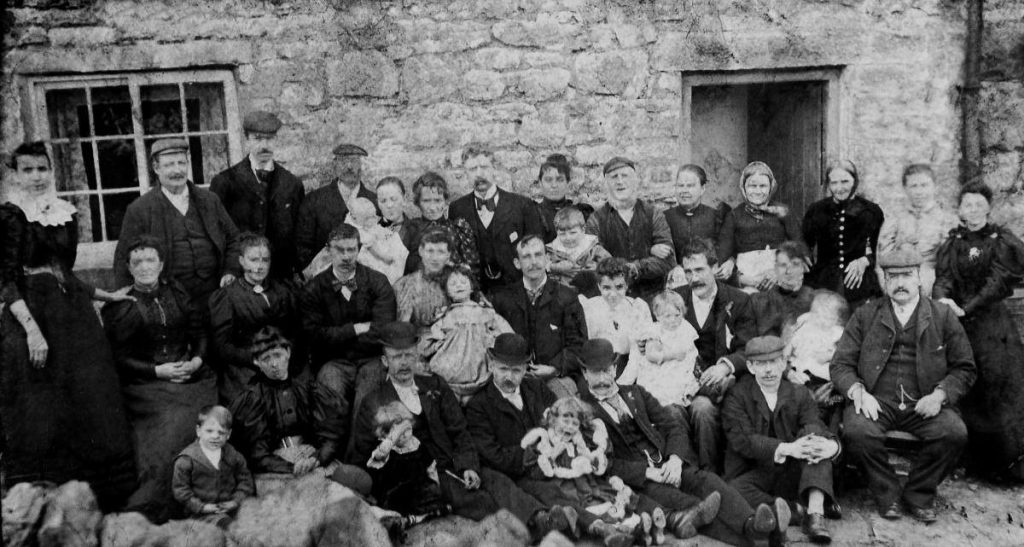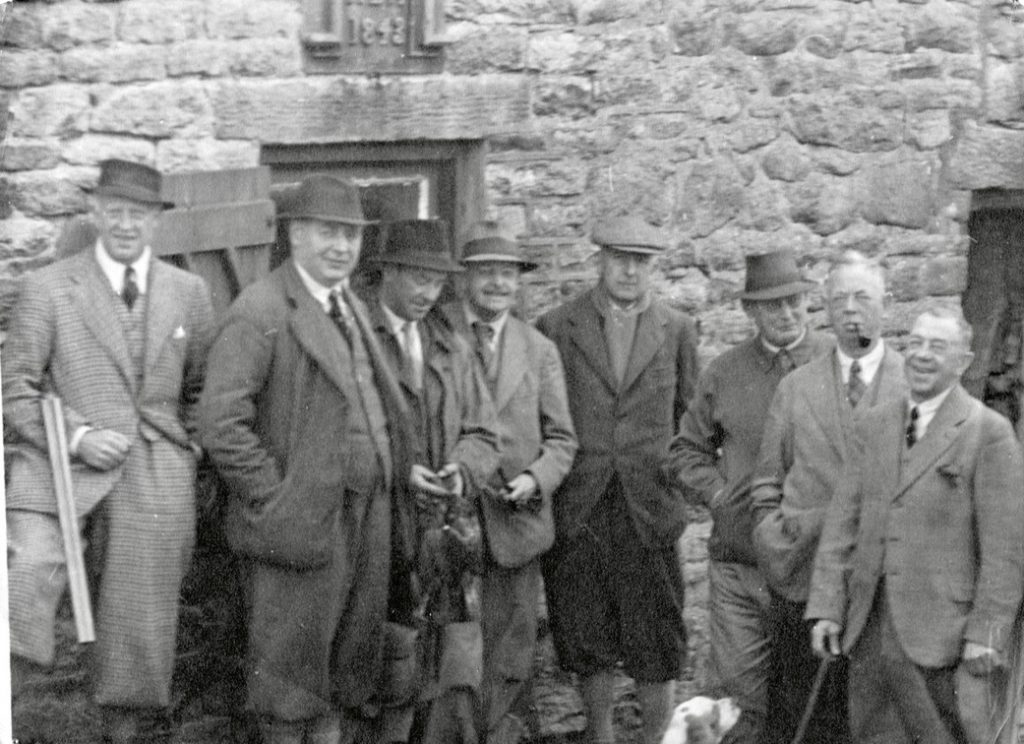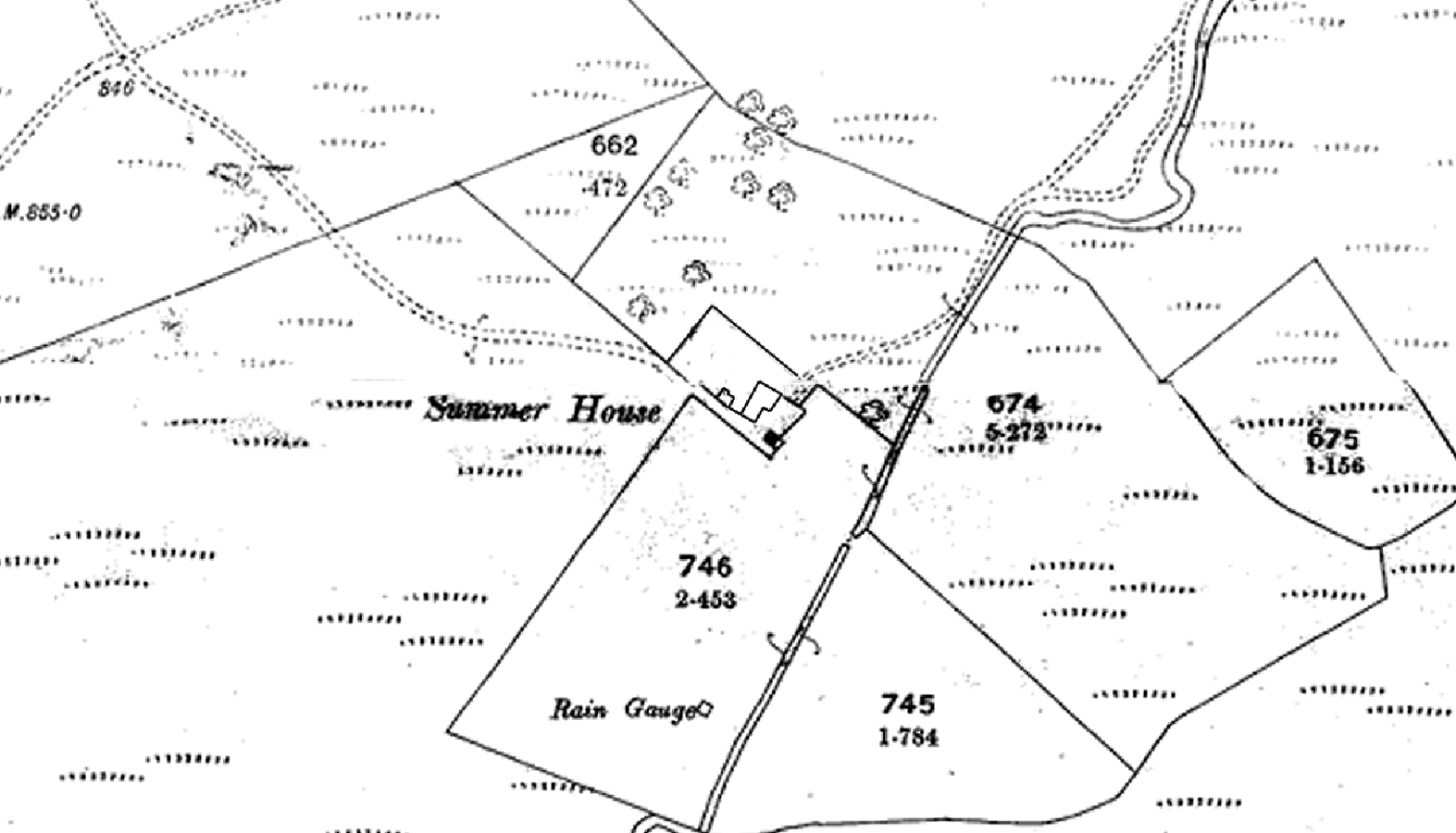The ‘Lost Farms’ consist of nearly 50 farm ruins, all traditional stone longhouses, originally built in the 17th and 18th centuries on Brinscall Moor. Botany Bay is one of the most remote.

Then

Now

Some of the Robinson family outside Botany Bay around 1930.
Botany Bay is the most remote farm ruin on Brinscall Moor, which is probably why it got it’s name because living there was likened to being sent to Australia (Botany Bay was the site of a penal colony in New South Wales).
It was also known as ‘the Summer House’. Although it was no longer a working farm it was used as a base for grouse shooting parties for many years. Richard Robinson was born here in 1883 and grew up to be a stonemason. His memories were published by his granddaughter Barbara, in ‘Recollections of a Moorland Lad’ and provide a rich record of life on the moors.
The stone over the window, reading H.B.H. 1843 should never have been placed here. It was originally from Hollinshead Hall and the initials are Henry Brock-Hollinshead’s.
The beech tree nearby is remembered by Richard Robinson from his child so is over 140 years old!
Listen to interviews
Botany Bay has an unusual ground plan with 2 major rooms, both 2m by 2m, side by side. The Northern rooms were built later and had single storey lean-to roofs next to the double storeyed and earlier Southern rooms. There is a small extension at west end. You can still see some sizeable and splendid quoins at the Eastern corners of the buildings and one small blocked doorway.
In the mid 1800s (before the railway), the Robinsons used to take a horse and cart into Chorley or Blackburn to buy in food and to sell their own ham, eggs & butter. In 1891 James Robinson (54) lived here with 66 year old wife Mary. They were still farming but all 3 daughters were cotton mill workers, plus 3 grandchildren.
Later the building was used as a meeting (and picnic) place for grouse shooting parties.
Thank you to Carnegie Publishing for permission to use the photos from David Clayton’s book ‘The Lost Farms of Brinscall Moors’

The Robinson family plus friends and neighbours at Botany Bay in 1890. Richard Robinson is the small boy in the bottom left of the photo.

The ‘guns’ at Botany Bay in 1960. Eric Furness (the game-keeper) is third from the left.

This project was largely inspired by David Clayton’s book, ‘The Lost Farms of Brinscall Moors’, which is available from Carnegie Publishing: https://www.carnegiepublishing.co.uk/product/lost-farms-of-brinscall-moors/
The book contains a wealth of information on all the farms which has not been covered here, as we have focused on the farms for which we could find oral histories. If you would like to find out more, please do buy a copy of the book!
BBC – Countryfile season 23 episode 5, first aired 12th April 2012
Thank you to Carnegie publishing for permission to use photographs from David Clayton’s book, ‘The Lost Farms of Brinscall Moors’ and to Jed, creator of the www.white-coppice.co.uk pages who took many of the photos of the farms in modern times and to the many people who shared memories and photos. In particular Barbara Butler (Richard Robinson’s granddaughter), David Fairclough (who has compiled an extensive collection of historic photos) and Linda Fonseka (descendent of Elizabeth Dixon).

